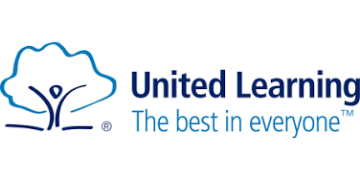Referring to unregistered alternative provisions (AP) last week, the children’s commissioner spoke of the need to register, regulate and raise standards. She is right, of course, but she should be equally concerned about the rise in internal AP.
If we asked all school leaders to raise their hands to signal that their school wasn’t inclusive, there would be a murmur of disbelief, perhaps even the odd gasp of horror. Not one hand would move.
But are our schools truly inclusive if, for many, ‘inclusion’ simply means ‘not exclusion’? And how does the growing trend for internal AP really differ from ‘respect’ or ‘reflection’ or ‘reset’ rooms?
I’m certain there are examples of great practice, settings where the curriculum is properly tailored to meet need, support is intense and re-integration is the aim.
But I’m equally certain that in many cases these so-called internal APs are little more than isolation rooms where those who might ‘spoil the other children’s learning’ are rounded up, given a watered-down curriculum and held until they become someone else’s responsibility.
Meanwhile, Edurio’s pupil experience survey shows that ‘pupil Interest in learning’ has dropped significantly from 42 per cent in 2020/21 to 28 per cent last year. Levels of enjoyment, trust, agency and safety drop dramatically among year 7 pupils and don’t fully recover.
And we know that falling engagement predicts not only increased absenteeism but worsening behaviour.
In short, our schools are clearly not as inclusive as we think.
In this context, it’s not hard to see why there is growing concern that, rather than fostering inclusion as its proponents argue, internal AP is in fact a way to mask or offset rising suspensions and exclusions and falling attendance.
Our schools are clearly not as inclusive as we think
Witness the growing assertions that children aren’t ‘school ready’. Maybe we need to look at this through a different lens: Are schools ready for to really meet the needs of their changing pupil population?
To that end, imagine if what the best APs do was a recognised and accepted alternative.
Imagine a curriculum that didn’t require children to sit down and shut up for most of the time and positively encouraged movement breaks and fresh air.
Imagine a system where children weren’t divided according to labels like neuro-typical and neuro-diverse but taught in a way that recognised and understood neuroscience.
And imagine if discipline didn’t mean red lines and zero tolerance but, as Dan Siegal suggests, “to teach, not to punish. A disciple is a student, not a recipient of behavioural consequences.”
What I am not doing is making excuses for poor behaviour. But I am concerned about our behaviours as a profession.
AP doesn’t need to be the result of a painful process of butting up against rules and expectations that children can’t meet. It doesn’t have to be an alternative to exclusion.
It should be a genuine alternative to an academic curriculum that we have too long taken as the only one worthy of respect. It should be part of an entitlement for every child to belong, thrive and achieve.
This doesn’t mean lowering our expectations. It means upping our game.
Imagine a school with a hair salon next to the science lab or a bike repair room next to the maths classroom; with outside grass areas which are home to rabbits and hens. Imagine if forest schools were an expected and accepted part of every child’s curriculum.
For that matter, imagine a curriculum that placed equal focus and value on the EEF core competencies of self-awareness, self-management, social awareness, relationship skills and responsible decision making.
Doesn’t that sound like a true alternative? Doesn’t that sound like an environment all our children should be entitled to?
If our PRUs and special schools can do this with some of our most vulnerable children – and indeed if so many primaries can hang onto this curriculum ideal in spite of increasing accountability metrics – why can’t we all follow suit?
We can’t have a more inclusive mainstream if we don’t broaden its course. For now, it seems to me that all internal AP does (at best) is to channel an inconvenient over-flow elsewhere.











Your thoughts